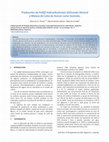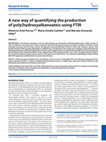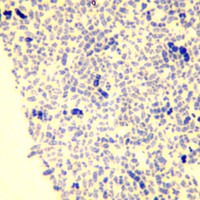Papers by Mauricio A Porras

Journal of microbiological methods, Jan 23, 2018
The presence of intracellular polyhydroxyalkanoates (PHAs) is usually studied using Sudan black d... more The presence of intracellular polyhydroxyalkanoates (PHAs) is usually studied using Sudan black dye solution (SB). In a previous work it was shown that the PHA could be directly quantified using the absorbance of SB fixed by PHA granules in wet cell samples. In the present paper, the optimum SB amount and the optimum conditions to be used for SB assays were determined following an experimental design by hybrid response surface methodology and desirability-function. In addition, a new methodology was developed in which it is shown that the amount of SB fixed by PHA granules can also be determined indirectly through the absorbance of the supernatant obtained from the stained cell samples. This alternative methodology allows a faster determination of the PHA content (involving 23 and 42 min for indirect and direct determinations, respectively), and can be undertaken by means of basic laboratory equipment and reagents. The correlation between PHA content in wet cell samples and the spec...

Los polihidroxialcanoatos (PHA) son poliésteres biodegradables, sintetizados y acumulados como gr... more Los polihidroxialcanoatos (PHA) son poliésteres biodegradables, sintetizados y acumulados como gránulos intracelulares por distintos géneros bacterianos en condiciones de cultivo desbalanceadas. El PHB es de gran interés industrial debido a que sus propiedades son similares a las del polipropileno. Uno de los factores limitantes para la producción de este biopolímero es el costo de las materias primas empleadas en las fermentaciones como fuente de carbono. Por tal motivo, se está realizando un gran esfuerzo en optimizar la producción con sustratos de bajo costo. En este trabajo se analizó comparativamente glicerol y melaza de caña de azúcar como sustratos para el crecimiento y la producción de PHAs empleando una cepa de Bacillus megaterium aislada del estuario de Bahía Blanca. La cepa produjo mayores concentraciones de PHA utilizando melaza como sustrato. La producción de PHA empleando melaza como sustrato fue más de tres veces mayor que al emplear glicerol como sustrato.

BACKGROUND: Conventional techniques used for determination of extractable poly(hydroxyalkanoate)s... more BACKGROUND: Conventional techniques used for determination of extractable poly(hydroxyalkanoate)s (PHAs) present in the cells, are laborious and destructive. Fourier Transform Infrared (FTIR) spectroscopy is an indirect analytical method to study molecular structures and has been used for the detection and quantification of PHA in intact cells. However, to obtain a fine powder with pure PHA to prepare KBr pellets is a difficult task. The objective of this study was to develop a cheap alternative for quantifying the extractable intracellular PHA, based on a pulverizable solid as a standard material (PEM: Pre Extraction Material) produced by Bacillus megaterium BBST4 strain, instead of pure PHA produced by the same strain. Through statistical analysis the correlation between sample content and its FTIR spectra were determined. The proposed methodology employs typical MID-FTIR equipment and KBr pellets for spectra determination.
RESULTS: Small root-mean-standard errors of prediction of the amount of extractable PHA were obtained using partial least square regression (PLSR1). In order to simplify the determination process, a simple linear regression analysis (SLRA) was also developed, and satisfactory correlations were found.
CONCLUSIONS: Results from PLSR1 and SLRA, calibrated with the proposed standard, indicate that it is a simple, fast and reliable alternative of fitting for determining the extractable PHA in unknown lyophilized cell samples.










Uploads
Papers by Mauricio A Porras
RESULTS: Small root-mean-standard errors of prediction of the amount of extractable PHA were obtained using partial least square regression (PLSR1). In order to simplify the determination process, a simple linear regression analysis (SLRA) was also developed, and satisfactory correlations were found.
CONCLUSIONS: Results from PLSR1 and SLRA, calibrated with the proposed standard, indicate that it is a simple, fast and reliable alternative of fitting for determining the extractable PHA in unknown lyophilized cell samples.
RESULTS: Small root-mean-standard errors of prediction of the amount of extractable PHA were obtained using partial least square regression (PLSR1). In order to simplify the determination process, a simple linear regression analysis (SLRA) was also developed, and satisfactory correlations were found.
CONCLUSIONS: Results from PLSR1 and SLRA, calibrated with the proposed standard, indicate that it is a simple, fast and reliable alternative of fitting for determining the extractable PHA in unknown lyophilized cell samples.